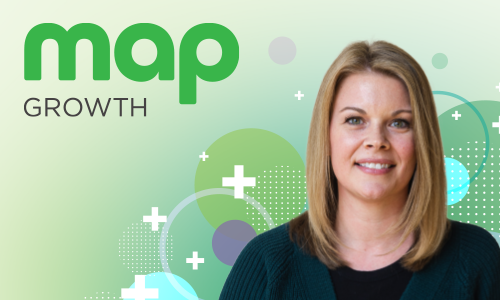
In the busy rush of teaching, there isn’t always time to look at many data points before making decisions about student learning. But using multiple measures to evaluate learning can help minimize the risk of reading too much into any single piece of information. Enter data triangulation.
Data triangulation is the process of using at least three data points to inform instructional decision-making. It helps teachers get a more complete picture of student learning. When all the data points lead to similar conclusions about a student’s needs, it’s easier to be more confident that the decisions made to address those needs are the right ones.
You can make data triangulation part of your regular practice. Here’s how.
First, pick your data sources
When tackling data triangulation, you’ll need to start by selecting your data sources. The good news is there’s usually a lot of data available. The bad news? It can be intimidating.
To make the best use of data, aim to understand what you have and what it measures. Here are some examples:
- Classroom-based data, like observations, student classwork and participation, and behavioral measures
- Formative assessment data, like quizzes, tests, and projects
- Interim assessment data, like from MAP® Growth™
- Summative assessment data, like portfolios of student work, end-of-unit tests, and results of state assessments
Second, manage your data
It can be tricky to manage data from different sources, let alone make sense of it all. Here are some things to try:
- Make data easy to access and use. If you prefer to store data digitally, a district-level data-management program like Otus can help you collect and organize various types of learning and assessment data. Or explore the tools available with Google Classroom. Printouts and file folders are a good solution, too, if you prefer to work with hard copies. Whatever approach you take, remember to consistently use a descriptive naming convention so you can find what you’re looking for later.
- Update data regularly. Data has to be accurate to be useful, so make frequent updates to yours a habit. Fit those updates into your routine to keep the task manageable. Current data will make it easier to quickly decide on classroom assessments.
- Use data to inform your instruction. Data can paint many different pictures. Ask yourself what your end goal is, and the answer can help you select the most useful batch of data to work with. For example, if you’re forming instructional groups, look to interim assessment data. If you suspect you might need to revisit a concept with your students, review your classroom assessments and observations.
- Collaborate with colleagues. Have genuine conversations about student data with fellow teachers so everyone can benefit from collective knowledge. Ask questions that can lead to thoughtful discussions, like “What stands out to you in this data?” Share strategies for reaching students where they are. Or, if you’re feeling stuck in your practice, look to colleagues for tips that have worked for them.
Learn more
Wrangling student data can feel overwhelming at first. But once you get into a groove with a system that works for you, it will become much more manageable. The best parts come after that: pinpointing students’ strengths and opportunities as well as fine-tuning your practice so you can help them reach their goals.
To learn more, visit our archive of Teach. Learn. Grow. blog posts on using assessment data.






